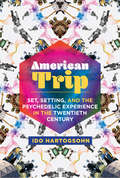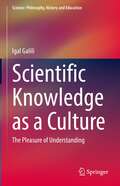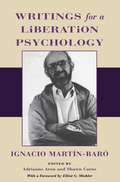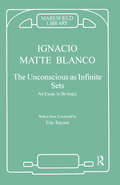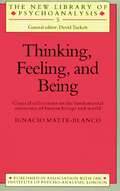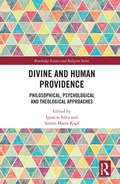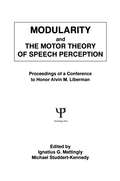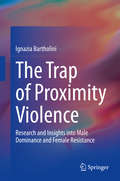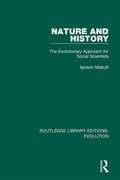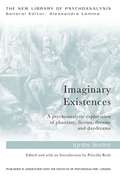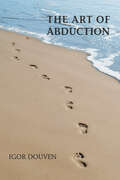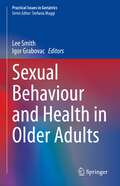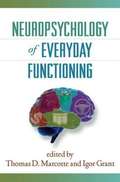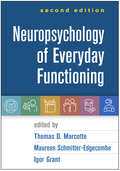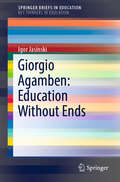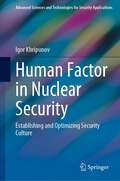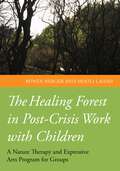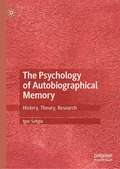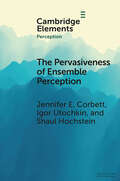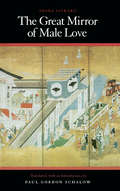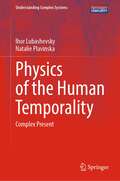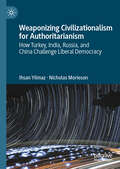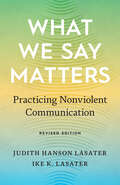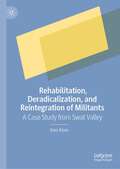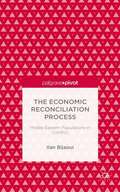- Table View
- List View
American Trip: Set, Setting, and the Psychedelic Experience in the Twentieth Century
by Ido HartogsohnHow historical, social, and cultural forces shaped the psychedelic experience in midcentury America, from CIA experiments with LSD to Timothy Leary's Harvard Psilocybin Project.Are psychedelics invaluable therapeutic medicines, or dangerously unpredictable drugs that precipitate psychosis? Tools for spiritual communion or cognitive enhancers that spark innovation? Activators for one's private muse or part of a political movement? In the 1950s and 1960s, researchers studied psychedelics in all these incarnations, often arriving at contradictory results. In American Trip, Ido Hartogsohn examines how the psychedelic experience in midcentury America was shaped by historical, social, and cultural forces--by set (the mindset of the user) and setting (the environments in which the experience takes place).
Scientific Knowledge as a Culture: The Pleasure of Understanding (Science: Philosophy, History and Education)
by Igal GaliliThis book, in its first part, contains units of conceptual history of several topics of physics based on the research in physics education and research based articles with regard to several topics involved in teaching science in general and physics in particular. The second part of the book includes the framework used, the approach considering science knowledge as a special type of culture – discipline-culture. Within this approach, scientific knowledge is considered as comprised of a few inclusive fundamental theories each hierarchically structured in a triadic pattern: nucleus-body-periphery. While nucleus incorporates the basic principles and body comprises their implementations in the variety of laws, models, and experiments, periphery includes concepts at odds to the nucleus. This structure introduces knowledge in its conceptual variation thus converting disciplinary knowledge to cultural-disciplinary one. The approach draws on history and philosophy of science (HPS) necessary for meaningful learning of science. It is exemplified in several aspects regarding teaching physics, presenting history in classes, considering the special nature of science, and using artistic images in regular teaching. The revealed conceptual debate around the chosen topics clarifies the subject matter for school students and teachers encouraging construction of Cultural Content Knowledge. Often missed in teachers' preparation and common curriculum it helps genuine understanding of science thus providing remedy of students' misconceptions reported in educational research.
Writings for a Liberation Psychology
by Ignacio Martín-Baró"In your country," Ignacio Martín-Baró remarked to a North American colleague, "it's publish or perish. In ours, it's publish and perish." In November 1989 a Salvadoran death squad extinguished his eloquent voice, raised so often and so passionately against oppression in his adopted country. A Spanish-born Jesuit priest trained in psychology at the University of Chicago, Martín-Baró devoted much of his career to making psychology speak to the community as well as to the individual. This collection of his writings, the first in English translation, clarifies Martín-Baró's importance in Latin American psychology and reveals a major force in the field of social theory. Gathering essays from an array of professional journals, this volume introduces readers to the questions and concerns that shaped Martín-Baró's thinking over several decades: the psychological dimensions of political repression, the impact of violence and trauma on child development and mental health, the use of psychology for political ends, religion as a tool of ideology, and defining the "real" and the "normal" under conditions of state-sponsored violence and oppression, among others. Though grounded in the harsh realities of civil conflict in Central America, these essays have broad relevance in a world where political and social turmoil determines the conditions of daily life for so many. In them we encounter Martín-Baró's humane, impassioned voice, reaffirming the essential connections among mental health, human rights, and the struggle against injustice. His analysis of contemporary social problems, and of the failure of the social sciences to address those problems, permits us to understand not only the substance of his contribution to social thought but also his lifelong commitment to the campesinos of El Salvador.
The Unconscious as Infinite Sets: An Essay in Bi-logic
by Ignacio Matte BlancoA systematic effort to rethink Freud's theory of the unconscious, aiming to separate out the different forms of unconsciousness. The logico-mathematical treatment of the subject is made easy because every concept used is simple and simply explained from first principles. Each renewed explanation of the facts brings the emergence of new knowledge from old material of truly great importance to the clinician and the theorist alike. A highly original book that ought to be read by everyone interested in psychiatry or in Freudian psychology.
Thinking, Feeling, and Being: Clinical Reflections On The Fundamental Antinomy Of Human Beings And World (New Library of Psychoanalysis #Vol. 5)
by Ignacio Matte-BlancoIgnacio Matte-Blanco has made one of the most original contributions to psychoanalysis since Freud. In this book, which includes an introductory chapter to his work by Eric Rayner and David Tuckett, he develops his conceptualization of the Freudian unconscious in terms of logic and mathematics, giving many clinical examples.
Divine and Human Providence: Philosophical, Psychological and Theological Approaches (Routledge Science and Religion Series)
by Ignacio Silva Simon KopfThis volume offers an original perspective on divine providence by examining philosophical, psychological, and theological perspectives on human providence as exhibited in virtuous human behaviours. Divine providence is one of the most pressing issues in analytic theology and philosophy of religion today, especially in view of scientific evidence for a natural world full of indeterminacies and contingencies. Therefore, we need new ways to understand and explain the relations of divine providence and creaturely action. The volume is structured dynamically, going from chapters on human providence to those on divine providence, and back. Drawing on insights from virtue ethics, psychology and cognitive science, the philosophy of providence in the face of contingent events, and the theology of grace, each chapter contributes to an original overall perspective: that human providential action is a resource suited specifically to personal action and hence related to the purported providential action of a personal God. By putting forward a fresh take on divine providence, this book enters new territory on an age-old issue. It will therefore be of great interest to scholars of theology and philosophy.
Modularity and the Motor theory of Speech Perception: Proceedings of A Conference To Honor Alvin M. Liberman
by Michael Studdert-Kennedy Ignatius G. MattinglyA compilation of the proceedings of a conference held to honor Alvin M. Liberman for his outstanding contributions to research in speech perception, this volume deals with two closely related and controversial proposals for which Liberman and his colleagues at Haskins Laboratories have argued forcefully over the past 35 years. The first is that articulatory gestures are the units not only of speech production but also of speech perception; the second is that speech production and perception are not cognitive processes, but rather functions of a special mechanism. This book explores the implications of these proposals not only for speech production and speech perception, but for the neurophysiology of language, language acquisition, higher-level linguistic processing, the visual perception of phonetic gestures, the production and perception of sign language, the reading process, and learning to read. The contributors to this volume include linguists, psycholinguists, speech scientists, neurophysiologists, and ethologists. Liberman himself responds in the final chapter.
The Trap of Proximity Violence: Research and Insights into Male Dominance and Female Resistance
by Ignazia BartholiniThis book aims at shifting the emphasis from a general vision of gender-based violence to a more opaque, yet equally destructive one, that related to "proximity violence".The first type of violence is exercised in multiple situations and in the generality of relationships experienced by people involving others who are both strangers to and intimate with each other. Proximity violence provides and includes a fiduciary kind of "proximity", of "dependent intimacy", where the trust that the victim places in the other (her tormentor) favours the exercise of violence itself, allowing it to take place, thus making it practically imperceptible when not actually normal, in extreme cases.In turn, this confidence is comparable to "a veil of Maja" which, in conditions of vulnerability typical of victims, attenuates the consequences of the violence undergone or the omens of what becomes violent action.The conceptual triad: proximity violence, vulnerability, resistance-resilience is explored here, in the three main chapters and in the details aimed at identifying, in the final chapter, the mutual interconnections. This book will be of particular interest and use to undergraduate and graduate students of sociology and gender studies
Nature and History: The Evolutionary Approach for Social Scientists (Routledge Library Editions: Evolution #6)
by Ignazio MasulliOriginally published in 1990, Nature and History examines how Darwin’s theory of evolution has been expanded by scholars and researchers to include virtually every scientific discipline. The book presents a morphological analysis of historical and social sciences – sciences which have traditionally have been viewed as too random in their progressions to conform to a model. Through the evaluation of empirical and factual evidence, the book builds a case for an evolutionary paradigm which encompasses both natural and social sciences, and presents the form’s adaptiveness in working historical models.
Imaginary Existences: A psychoanalytic exploration of phantasy, fiction, dreams and daydreams (The New Library of Psychoanalysis)
by Ignes SodreImaginary Existences: A psychoanalytic exploration of phantasy, fiction, dreams and daydreams interweaves scholarly psychoanalytic knowledge and extensive clinical experience with insights derived from close readings of great literature in a uniquely imaginative and creative manner, convincingly demonstrating how these two ways of thinking – psychoanalysis and literary criticism – organically relate to each other. This is simultaneously a psychoanalytic book and a book about literature, illuminating the imaginative possibilities present within both the psychoanalytic encounter and the act of reading fiction. Scholarly and well researched, the psychoanalytic ideas presented have their basis in the work of Freud and Klein and some of their followers; the extensive and innovative writing about the great authors in Western literature is equally scholarly and lucent. Here, Ignês Sodré explores creativity itself and, specifically, the impediments to creative thinking: defences, mostly narcissistic, against dependency, guilt and loss, and the mis-use of imagination to deny reality. In her studies of the characters created by authors such as George Eliot, Cervantes, Flaubert, Thomas Mann, Proust and Shakespeare, Sodré examines the way great writers create characters who mis-use their imagination, twisting reality into romantic daydreams or sado-masochistic enactments, which petrify experience and freeze the fluidity of thought. Her clinical studies continue and expand this theme, broadening the field and lending verification and weight to the arguments. These two poles of Sodré’s thinking – psychoanalysis and literature – interact seamlessly in Imaginary Existences; the two disciplines work together, each an intimate part of a learned exploration of the human condition: our desires, our fears and our delusions. This convergence pays tribute to the great depth of the fictional work being studied and to the psychological validity of the psychoanalytic ideas. This book will be of interest to psychoanalysts, psychologists, psychotherapists, literary critics, and those interested in literature and literary criticism.
The Art of Abduction
by Igor DouvenA novel defense of abduction, one of the main forms of nondeductive reasoning.With this book, Igor Douven offers the first comprehensive defense of abduction, a form of nondeductive reasoning. Abductive reasoning, which is guided by explanatory considerations, has been under normative pressure since the advent of Bayesian approaches to rationality. Douven argues that, although it deviates from Bayesian tenets, abduction is nonetheless rational. Drawing on scientific results, in particular those from reasoning research, and using computer simulations, Douven addresses the main critiques of abduction. He shows that versions of abduction can perform better than the currently popular Bayesian approaches—and can even do the sort of heavy lifting that philosophers have hoped it would do. Douven examines abduction in detail, comparing it to other modes of inference, explaining its historical roots, discussing various definitions of abduction given in the philosophical literature, and addressing the problem of underdetermination. He looks at reasoning research that investigates how judgments of explanation quality affect people&’s beliefs and especially their changes of belief. He considers the two main objections to abduction, the dynamic Dutch book argument, and the inaccuracy-minimization argument, and then gives abduction a positive grounding, using agent-based models to show the superiority of abduction in some contexts. Finally, he puts abduction to work in a well-known underdetermination argument, the argument for skepticism regarding the external world.
Sexual Behaviour and Health in Older Adults (Practical Issues in Geriatrics)
by Lee Smith Igor GrabovacThis book provides a comprehensive overview for those interested in research and promoting sexual health in older people, as well as a “go-to” guide on the topic of sexual behaviour in older adults. Sexual activity is an essential part of intimate relationships, though it tends to decline in frequency as people grow older. Nevertheless, for many older people, sex still remains an important part of their life. There’s a common misconception that as people age, they lose their interest in sex and capacity for sexual behaviour. This is not the case, as a number of national surveys show. The new research presented here indicates that the less sex older people have, the more likely they are to experience mental and physical health problems. Men and women who reported a decrease in the frequency of sexual activities were also more likely to report a deterioration in self-perceived health. Additionally, men with erectile dysfunction were also more likely to be diagnosed with cancer or coronary heart disease. This research has also determined that older adults who experience a decline in sexual activity report poorer well-being than those who maintain their levels of sexual desire, activity and function in later life, and that men who remain sexually active in later life continue to have better cognitive performance compared to those who don’t. Despite these health benefits, medical professionals do little to promote sexual activity in older adults, and the literature suggests that there is a lack of knowledge on how to approach the subject and how to promote such activities. This is the first comprehensive book specifically exploring all areas of sexual behaviour and health in older adults, and drawing on the latest research in this area. It offers a valuable resource for researchers and clinicians in various health fields (medicine, nursing, occupational therapy, psychology, public health, etc.), as well as students in undergraduate and graduate programs.
Neuropsychology of Everyday Functioning
by Igor Grant Thomas MarcotteWhile neuropsychological testing can accurately detect cognitive deficits in persons with brain injury, the ability to reliably predict how these individuals will function in everyday life has remained elusive. This authoritative volume brings together well-known experts to present recent advances in the neuropsychological assessment of key real-world capacities the ability to live independently, work, manage medications, and drive a car. For each of these domains, contributors describe cutting-edge tests, procedures, and interpretive strategies and examine salient theoretical and methodological issues. Chapters also review approaches for evaluating specific populations, including older adults and patients with traumatic brain injury, depression, dementia, schizophrenia, and other neurological and psychiatric disorders.
Neuropsychology of Everyday Functioning, Second Edition
by Igor Grant Thomas D. Marcotte Maureen Schmitter-EdgecombeThe go-to resource for assessing and predicting functional abilities in persons with brain injury or cognitive decline has now been revised and expanded to reflect significant advances in the field. With a focus on key real-world capacities--independent living, vocational functioning, medication management, and driving--leading experts explore how individuals go about their daily lives, where and why disruptions occur, and potential opportunities for improving function. Strategies for direct assessment are reviewed, from standard neuropsychological tests to multimodal approaches and technology-based tools. Chapters also provide functional assessment guidance for specific neurological and psychiatric conditions: dementia, traumatic brain injury, depression, schizophrenia, and others. New to This Edition *Incorporates over a decade of technological and methodological innovations. *Chapter on theories and models of everyday functioning. *Chapters on naturalistic assessment, wearable sensors, ambulatory assessment, and virtual-reality-based tools. *Practical clinical implications are highlighted throughout.
Giorgio Agamben: Education Without Ends (SpringerBriefs in Education)
by Igor JasinskiItalian critical theorist Giorgio Agamben may be best known for his political writings concerning the curtailing of privacy rights in the wake of 9/11 and the status of prisoners of war and refugees. Yet, casting him primarily as a political theorist is misleading given his significant contributions to the fields of linguistics, literary theory, philosophy, aesthetics, and religious studies. This book provides the first ever comprehensive introduction to Agamben’s work as it pertains to the field of education. Written in a clear and accessible style, Giorgio Agamben: Education without Ends is an invaluable resource for anyone interested in thinking education beyond its current standardized forms.The first part of the book creates a context by highlighting formative experiences in Agamben’s biography that reflect a particular idea of education on the threshold between life and work. The second part introduces the notions of infancy, study, community, and happiness, and discusses their relevance with regard to key issues in educational theory and practice. The third part shows how conceptual constellations based on Agamben’s work can inspire studious practices within the spatial, temporal, and curricular infrastructure of educational institutions as they exist today.
Human Factor in Nuclear Security: Establishing and Optimizing Security Culture (Advanced Sciences and Technologies for Security Applications)
by Igor KhripunovThis book attempts to look into the genesis of security culture as a concept which emerged with the recognition of the role of the human factor in the context of security. It traces the rapid evolution of security culture into a multi-functional discipline reinforced by supplementary tools such as assessment and enhancement methodologies, reviews practical steps to harmonize nuclear safety and security culture as well as recommends its practical application to address insider threats and their consequences. In addition, it demonstrates how to tailor the generic model of nuclear security culture to meet specific needs of diverse facilities and activities in different countries. Finally, the book discusses several challenges which need to be addressed to make security culture a user-friendly, universal, and sustainable instrument to turn the perception of the human factor as a liability into an asset of nuclear security.
The Healing Forest in Post-Crisis Work with Children: A Nature Therapy and Expressive Arts Program for Groups
by Mooli Lahad Ronen Berger Igor KovyarNature Therapy is an innovative approach for working with children who have experienced stress or trauma. For the first time in the English language, this book presents the theory behind the approach along with detailed guidelines for introducing it to the classroom and other group settings The flexible 12-session programme pairs nature-based activities with storytelling and other expressive arts approaches. It is designed to strengthen coping and resilience in children who have been through common causes of stress such as the divorce of parents, moving home, the illness of a loved one or bullying. It can also be used in the aftermath of large-scale crises such as war, terrorism and natural disasters to prevent and treat post-traumatic stress disorder. An evocative colour storybook, 'The Guardians of the Forest', is also included for use within the programme. The original, evidence-based approach described in this book will be of interest to all those working therapeutically or creatively with children who have experienced stress or trauma, including teachers, arts therapists, psychologists and counsellors.
The Psychology of Autobiographical Memory: History, Theory, Research
by Igor SotgiuThis book provides an overview of the key theoretical and empirical issues relating to autobiographical memory: the extraordinarily complex psychological activity that enables us to retrieve, relive and reappraise our pasts. The first part of the book retraces the genesis and historical development of the psychology of autobiographical memory, from the pioneering contributions of Francis Galton, Victor Henri and Sigmund Freud, to the most recent research in the fields of cognitivism, cognitive science and neuroscience. The author then moves on to two key topics in the contemporary panorama: the content and organisation of autobiographical memory (what we remember from our lives and how we link together specific segments of our personal pasts) and the functions of autobiographical memory (why we remember our pasts). This book will provide a valuable scholarly overview for cognitive psychologists and an authoritative critical introduction to the field for students and scholars from across psychology, philosophy, literary criticism, sociology and law.
The Pervasiveness of Ensemble Perception: Not Just Your Average Review (Elements in Perception)
by Jennifer E. Corbett Igor Utochkin Shaul HochsteinThis Element outlines the recent understanding of ensemble representations in perception in a holistic way aimed to engage the general audience, novel and expert alike. The Element highlights the ubiquitous nature of this summary process, paving the way for a discussion of the theoretical and cortical underpinnings, and why ensemble encoding should be considered a basic, inherently necessary component of human perception. Following an overview of the topic, including a brief history of the field, the Element introduces overarching themes and a corresponding outline of the present work.
The Great Mirror of Male Love
by Ihara SaikakuStories of homosexual love affairs between samurai men and boys and between young kabuki actors and their patrons held broad appeal in pre-modern Japanese culture. An independent popular writer, Saikaku wrote "Nanshoku Okagami" in 1687 with the intention of extending his readership.
Physics of the Human Temporality: Complex Present (Understanding Complex Systems)
by Ihor Lubashevsky Natalie PlavinskaThis book presents a novel account of the human temporal dimension called the “human temporality” and develops a special mathematical formalism for describing such an object as the human mind. One of the characteristic features of the human mind is its temporal extent. For objects of physical reality, only the present exists, which may be conceived as a point-like moment in time. In the human temporality, the past retained in the memory, the imaginary future, and the present coexist and are closely intertwined and impact one another.This book focuses on one of the fragments of the human temporality called the complex present. A detailed analysis of the classical and modern concepts has enabled the authors to put forward the idea of the multi-component structure of the present. For the concept of the complex present, the authors proposed a novel account that involves a qualitative description and a special mathematical formalism. This formalism takes into account human goal-oriented behavior and uncertainty in human perception.The present book can be interesting for theoreticians, physicists dealing with modeling systems where the human factor plays a crucial role, philosophers who are interested in applying philosophical concepts to constructing mathematical models, and psychologists whose research is related to modeling mental processes.
Weaponizing Civilizationalism for Authoritarianism: How Turkey, India, Russia, and China Challenge Liberal Democracy
by Ihsan Yilmaz Nicholas MoriesonThis book, based on a systematic analysis of leaders' speeches, examines how regimes in Turkey, India, Russia, and China strategically weaponize the concept of 'civilization' along with emotional appeals, such as pride, fear, and nostalgia, to challenge global liberal democratic norms. As the influence of liberal democracy wanes, these nations increasingly declare themselves &‘civilization-states&’. By redefining national identity to include peoples living in foreign countries, justifying belligerence abroad, and reinforcing anti-democratic practices domestically, these regimes position themselves as guardians of transnational peoples with distinctive civilizational values. This is the first book to systematically explore how and why these states leverage civilization and emotional manipulation to reshape both domestic politics and international relations.
What We Say Matters: Practicing Nonviolent Communication
by Judith Hanson Lasater Ike K. LasaterLearn how to communicate with compassion and choose language that reflects your personal values and aims with this essential guide to Nonviolent Communication.Judith Hanson Lasater and Ike Lasater, long-term students of yoga and Buddhism, had studied the concepts of satya (truth) and the Buddhist principle of right speech for years but it was not until they began practicing Marshall Rosenberg&’s techniques of Nonviolent Communication (NVC) that the concept of speech as a spiritual practice became real for them. In What We Say Matters, the authors describe their personal journey through NVC, and detail how speech becomes a spiritual practice when you give and receive with compassion all the time--at home, at work, and in the world. They introduce the basics of NVC with clear explanations, personal examples, exercises, and resources. Some of the skills you&‘ll learn include: Extending empathy to yourself and others Distinguishing between feelings and needs Making requests rather than demands Creating mutually satisfying outcomes And many moreThis new edition includes updated resources and a preface by Judith Hanson Lasate.
Rehabilitation, Deradicalization, and Reintegration of Militants: A Case Study from Swat Valley
by Ilam KhanThis ethnographic study focuses on post-conflict rehabilitation in Pakistan's Swat valley, addressing deradicalization, rehabilitation and reintegration in the context of militancy and counter-militancy. It provides a theoretical framework for rehabilitation, emphasizing disarmament, demobilization, and reintegration (DDR) and introduces the concepts of controlled environment, controlled society, and controlled rehabilitation within Swat's unique context. The book categorizes the drivers of militancy, revealing distinctions from conventional perspectives. It also assesses the challenges of reintegrating ex-combatants and explores the compatibility of restorative justice (RJ) with Pashtunwali, the traditional Pashtun legal system. The book is useful for researchers focusing Pashtun region, post-conflict interventionists, and peace and conflict scholars, this book offers valuable insights into the intricacies of this critical region's rehabilitation and counter-militancy efforts.
The Economic Reconciliation Process: Middle Eastern Populations in Conflict
by Ilan BijaouiThe Economic Reconciliation Process develops hybrid cross-border models based on the free economic zone, the industrial district, and the cluster to generate a common economic interest between countries and populations in declared or potential conflict in the Middle East.
